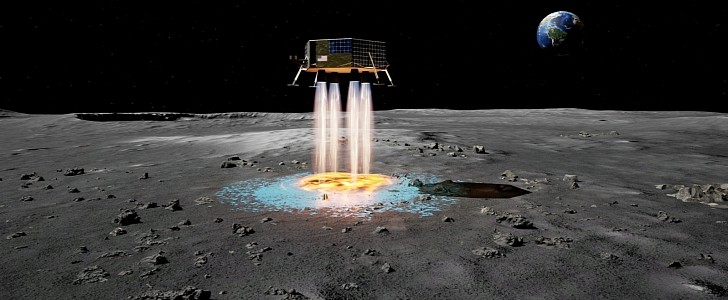As part of the Artemis program, NASA is preparing to return astronauts to the Moon. However, before they get to put their boots on our natural satellite once again, the agency must make sure that the lander, together with the crew, can safely touchdown on the rugged surface filled with regolith.
Many companies are already working to find solutions that would help future generations establish a long-term presence on the Moon. One of them is Masten Space Systems, which is developing a unique technology that could help spacecraft safely land on the lunar surface.
Our Moon is covered in a layer of crushed rock, which came from meteorite impacts called regolith. These large rocks could pose a threat to future landing missions by damaging the spacecraft and put astronauts in danger.
Compared to the Apollo landers, which had about 10 metric tons (22,046) of landed mass, the Artemis landers will have a landed mass of between 20 and 60 metric tons (44,092 to 132,277 lbs). Engine plumes from these bigger landers will kick up regolith at speeds exceeding 10,000 kph (6,213 mph).
To reduce the risk of getting pieces of sharp rock flying at such incredible speeds, Masten's in-Flight Alumina Spray Technique (FAST) landing pads will use ceramic particles injected into the rocket's plumes. That will produce a coating over the regolith as the lander descends toward the lunar surface. In turn, the particles collide with the surface and solidify to build up a secure landing pad.
This implies that spacecraft can land safely anywhere on the Moon without the requirement for a prior mission to build a landing pad. Spacecraft using conventional landing pad designs would be limited to landing in certain lunar areas, restricting their capacity to gather science over different lunar terrain.
Masten's FAST concept allows for total lunar access. Plus, it would also work on other planetary surfaces such as Mars, where regolith might put future missions in danger.
The FAST project, which was developed in partnership with Honeybee Robotics, Texas A&M University, and the University of Central Florida under a Phase 1 NASA Innovative Advanced Concepts award, has completed its year-long preliminary study of the concept. This involved simulating a lunar landing, determining the appropriate landing pad thickness, and ensuring that materials and particle sizes have the right temperature to attach to one another upon impact.
The company's aim for the next phase is to improve the landing pad technology by testing it in a lunar environment. If all goes accordingly, this new technology could also play a significant role in reducing total program costs associated with the construction of landing pad infrastructure.
Our Moon is covered in a layer of crushed rock, which came from meteorite impacts called regolith. These large rocks could pose a threat to future landing missions by damaging the spacecraft and put astronauts in danger.
Compared to the Apollo landers, which had about 10 metric tons (22,046) of landed mass, the Artemis landers will have a landed mass of between 20 and 60 metric tons (44,092 to 132,277 lbs). Engine plumes from these bigger landers will kick up regolith at speeds exceeding 10,000 kph (6,213 mph).
To reduce the risk of getting pieces of sharp rock flying at such incredible speeds, Masten's in-Flight Alumina Spray Technique (FAST) landing pads will use ceramic particles injected into the rocket's plumes. That will produce a coating over the regolith as the lander descends toward the lunar surface. In turn, the particles collide with the surface and solidify to build up a secure landing pad.
This implies that spacecraft can land safely anywhere on the Moon without the requirement for a prior mission to build a landing pad. Spacecraft using conventional landing pad designs would be limited to landing in certain lunar areas, restricting their capacity to gather science over different lunar terrain.
Masten's FAST concept allows for total lunar access. Plus, it would also work on other planetary surfaces such as Mars, where regolith might put future missions in danger.
The FAST project, which was developed in partnership with Honeybee Robotics, Texas A&M University, and the University of Central Florida under a Phase 1 NASA Innovative Advanced Concepts award, has completed its year-long preliminary study of the concept. This involved simulating a lunar landing, determining the appropriate landing pad thickness, and ensuring that materials and particle sizes have the right temperature to attach to one another upon impact.
The company's aim for the next phase is to improve the landing pad technology by testing it in a lunar environment. If all goes accordingly, this new technology could also play a significant role in reducing total program costs associated with the construction of landing pad infrastructure.






